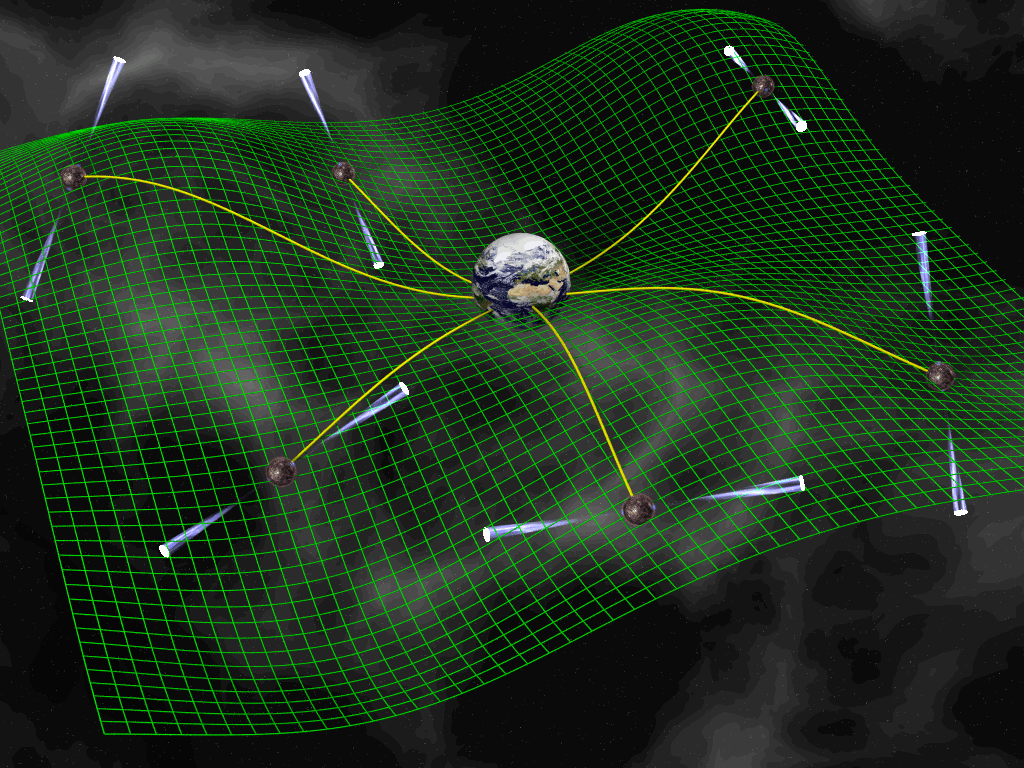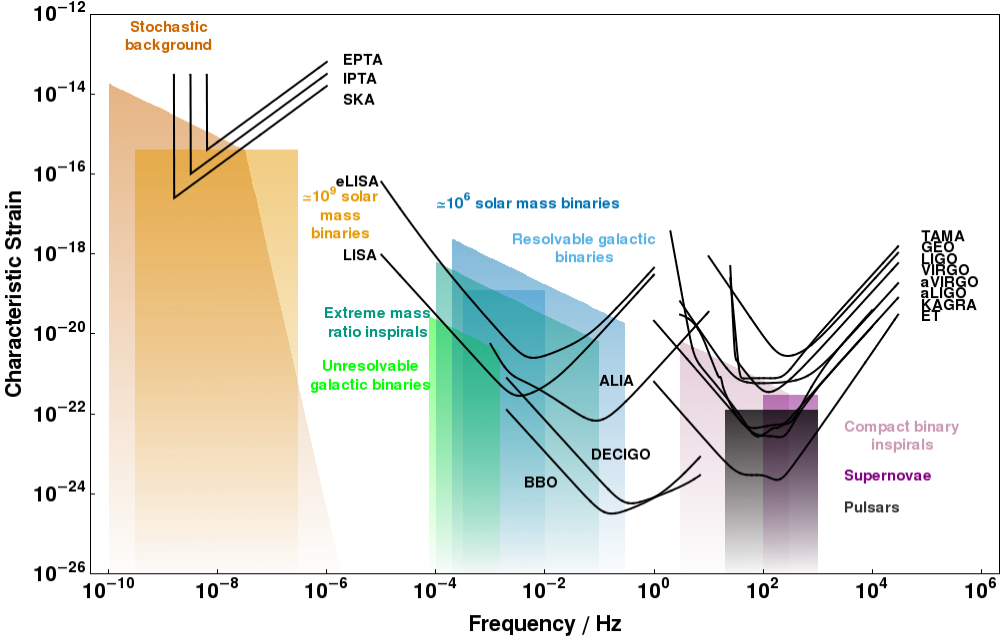Detecting Gravitational Waves with Pulsar Timing Arrays

Image credit: NASA's Goddard Space Flight Center

Since the first gravitational wave (GW) detection in 2016, GWs have been on the forefront of astrophysical research, paving the way for the present age of multimessenger astronomy. The observation and study of gravitational waves allow physicists and astronomers to probe unexplored areas of relativistic astrophysics and directly test general relativity. The first GWs were detected as a binary black hole pair merged into a single intermediate mass black hole; however, GWs can be emitted from a variety of other events such as supernovae, neutron star mergers, and supermassive black hole mergers.
Pulsar timing arrays (PTA) are used as a method of detecting GWs originating from sources other than those detectable by ground-based interferometers such as LIGO and Virgo. PTAs are made up of millisecond pulsars across the Milky Way that function as a galaxy-wide interferometer. These pulsars emit radio beams that appear as bright pulses as the pulsars rotate toward and away from our line of sight. As a gravitational wave passes through the travel path of the pulse, it stretches and compresses the path, delaying the time of arrival (TOA) at Earth. These TOAs are measured to detect the gravitational waves, where precision is vital to avoid false detections given the weakness of these signals.

PTAs are sensitive to low frequency gravitational waves, emitted from supermassive binary black hole mergers that can either be detected as individual events or as a stochastic background of GWs. Several PTA collaborations ( NANOGrav, IPTA, PPTA ) have been working to record enough radio time series data for the first GW detection at this frequency.